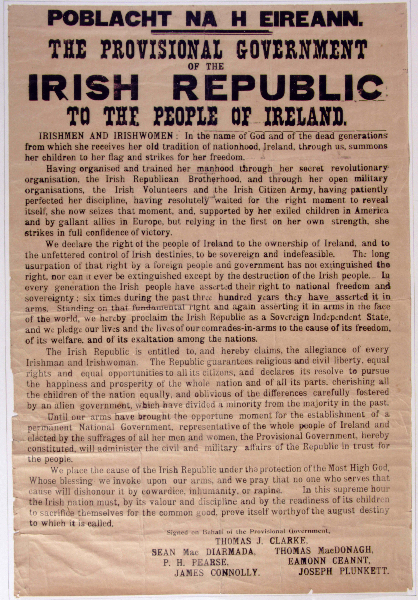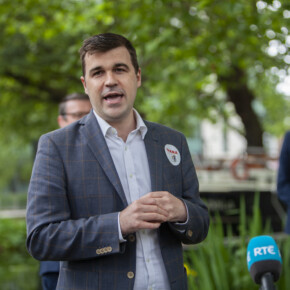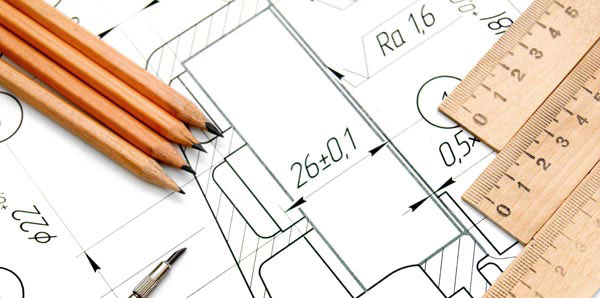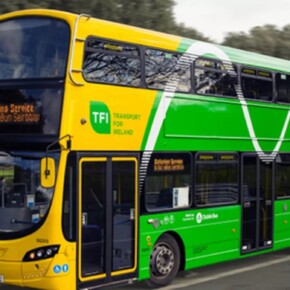Walking through history: The 1916 Proclamation
Dublin People 22 Jan 2017
THE Proclamation was printed on Easter Sunday 1916 in Liberty Hall. It is the document that was used by the Military Council of the IRB to declare or proclaim an Irish Republic on Easter Monday.
‘Poblacht na hÉireann’ means ‘Republic of Ireland’. It does not mean ‘Proclamation of Independence’ – that would be ‘Forógra na Saoirse’. There was no Irish word for republic so one was invented by amalgamating the word ‘pobal’ (people) and ‘ríocht’ (kingdom).
As regards the author of the Proclamation, no one knows for sure, but Patrick Pearse is the most obvious candidate. Doubtless there was some input from the other Military Council members – especially James Connolly – and it’s hard to imagine that poets Thomas MacDonagh and Joseph Plunkett did not add to the content.
Christopher Brady, who printed the Proclamation, mused over this later: “Although I read the manuscript I could not say in whose hand-writing it was. It certainly was not Connolly’s as I was familiar with his scrawl.”
Michael Molloy, one of the compositors, maintained that there was a piece of paper with the signatures of the Military Council attached to the handwritten manuscript of the Proclamation: ‘I do not know what became of the manuscript of the Proclamation but the signatures of the Proclamation were appended on a separate piece of paper. I took this with me and put it in my pocket and had it on my person when I was later a prisoner in Richmond barracks. Realising how dangerous it would be if the document containing actual signatures of the Proclamation was found, I destroyed it by chewing it up into small pieces and spitting it out on the floor.’
The printing machine used was a Double Crown Wharfedale and the paper used was called Crown, poster size, 20 inches x 30 inches (508mm x 762mm). It was purchased specifically for the job from Saggart Paper Mill.
The larger type is made of wood. On original copies of the Proclamation, the first ‘R’ in IRISH REPUBLIC is broken at the tail. This was ‘fixed’ in facsimile editions of the document. The font used is mostly Antique No. 8, made by Miller & Richard of Edinburgh, and the most common size is Two-line Great Primer.
The compositors ran out of the letter ‘e’ and used a different type, which has been identified variously as Abbey Text or Tudor Black. In the last sentence of the third paragraph, a number of these incorrect ‘e’s appear. Look out for the upside-down ‘e’ in the first line of the final paragraph!
The document was printed in two halves as there was not enough type. The bottom half was still in the printing machine as the British soldiers broke into Liberty Hall – they printed some off as souvenirs. There is a ‘half-Proclamation’ in Kilmainham Gaol, and every now and then they come up for auction.
Of the 2,500 printed there may be as few as 30 Proclamations left, but no count is available for those in private hands.
Lorcan Collins runs the Michael Collins Walking Tour (www.michaelcollinstour.com) and the 1916 Walking Tour (www.1916rising.com). His books, published by O’Brien Press, include ‘1916: The Rising Handbook’ (2016) and ‘James Connolly: 16 Lives’ (2012).











